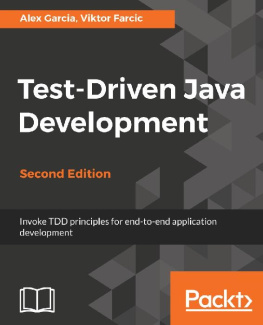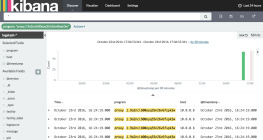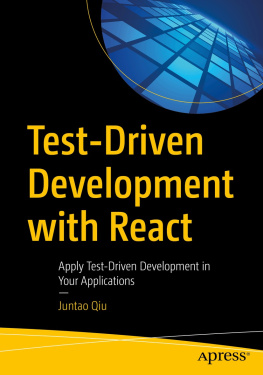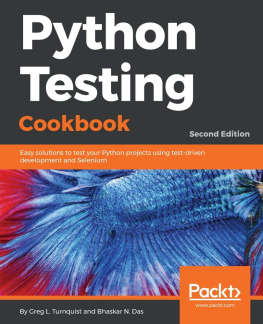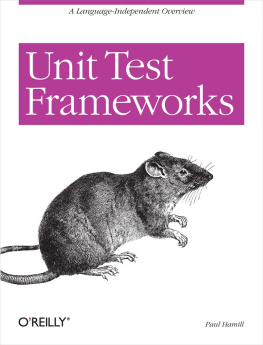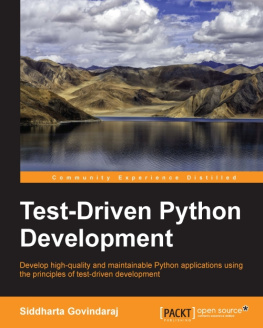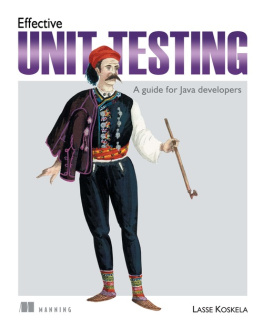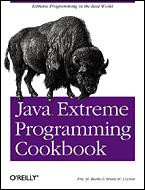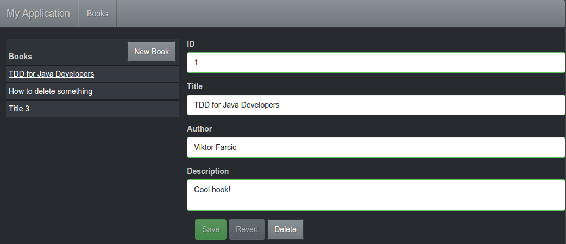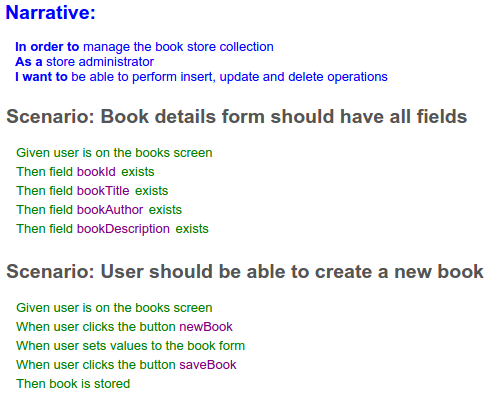Viktor Farcic - Test-Driven Java Development - Second Edition
Here you can read online Viktor Farcic - Test-Driven Java Development - Second Edition full text of the book (entire story) in english for free. Download pdf and epub, get meaning, cover and reviews about this ebook. year: 2018, publisher: Packt Publishing, genre: Computer. Description of the work, (preface) as well as reviews are available. Best literature library LitArk.com created for fans of good reading and offers a wide selection of genres:
Romance novel
Science fiction
Adventure
Detective
Science
History
Home and family
Prose
Art
Politics
Computer
Non-fiction
Religion
Business
Children
Humor
Choose a favorite category and find really read worthwhile books. Enjoy immersion in the world of imagination, feel the emotions of the characters or learn something new for yourself, make an fascinating discovery.
- Book:Test-Driven Java Development - Second Edition
- Author:
- Publisher:Packt Publishing
- Genre:
- Year:2018
- Rating:4 / 5
- Favourites:Add to favourites
- Your mark:
Test-Driven Java Development - Second Edition: summary, description and annotation
We offer to read an annotation, description, summary or preface (depends on what the author of the book "Test-Driven Java Development - Second Edition" wrote himself). If you haven't found the necessary information about the book — write in the comments, we will try to find it.
This book will teach the concepts of test driven development in Java so you can build clean, maintainable and robust code
About This Book
- Explore the most popular TDD tools and frameworks and become more proficient in building applications
- Create applications with better code design, fewer bugs, and higher test coverage, enabling you to get them to market quickly
- Implement test-driven programming methods into your development workflows
Who This Book Is For
If youre an experienced Java developer and want to implement more effective methods of programming systems and applications, then this book is for you.
What You Will Learn
- Explore the tools and frameworks required for effective TDD development
- Perform the Red-Green-Refactor process efficiently, the pillar around which all other TDD procedures are based
- Master effective unit testing in isolation from the rest of your code
- Design simple and easily maintainable code by implementing different techniques
- Use mocking frameworks and techniques to easily write and quickly execute tests
- Develop an application to implement behavior-driven development in conjunction with unit testing
- Enable and disable features using feature toggles
In Detail
Test-driven development (TDD) is a development approach that relies on a test-first procedure that emphasizes writing a test before writing the necessary code, and then refactoring the code to optimize it.The value of performing TDD with Java, one of the longest established programming languages, is to improve the productivity of programmers and the maintainability and performance of code, and develop a deeper understanding of the language and how to employ it effectively.
Starting with the basics of TDD and understanding why its adoption is beneficial, this book will take you from the first steps of TDD with Java until you are confident enough to embrace the practice in your day-to-day routine.Youll be guided through setting up tools, frameworks, and the environment you need, and we will dive right into hands-on exercises with the goal of mastering one practice, tool, or framework at a time. Youll learn about the Red-Green-Refactor procedure, how to write unit tests, and how to use them as executable documentation.With this book, youll also discover how to design simple and easily maintainable code, work with mocks, utilize behavior-driven development, refactor old legacy code, and release a half-finished feature to production with feature toggles.You will finish this book with a deep understanding of the test-driven development methodology and the confidence to apply it to application programming with Java.
Style and approach
An easy-to-follow, hands-on guide to building applications through effective coding practices. This book covers practical examples by introducing different problems, each one designed as a learning exercise to help you understand each aspect of TDD.
Downloading the example code for this book You can download the example code files for all Packt books you have purchased from your account at http://www.PacktPub.com. If you purchased this book elsewhere, you can visit http://www.PacktPub.com/support and register to have the files e-mailed directly to you.
Viktor Farcic: author's other books
Who wrote Test-Driven Java Development - Second Edition? Find out the surname, the name of the author of the book and a list of all author's works by series.

